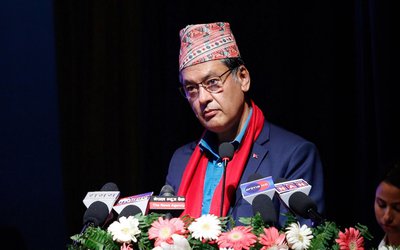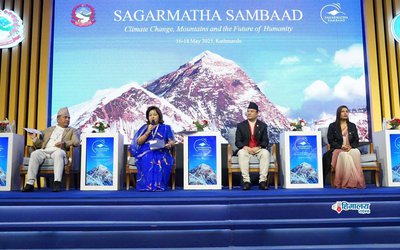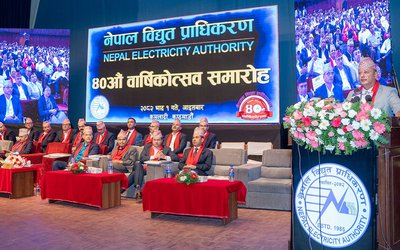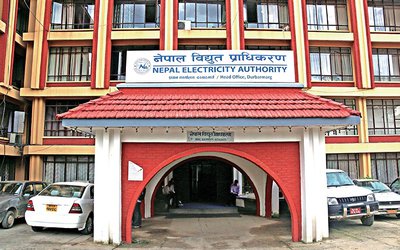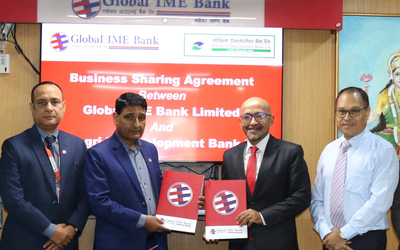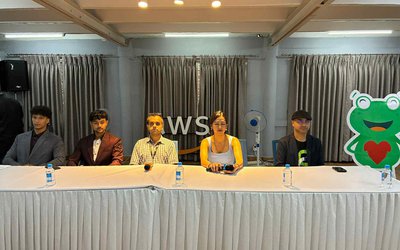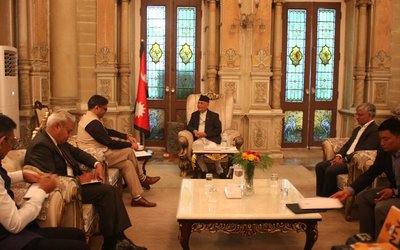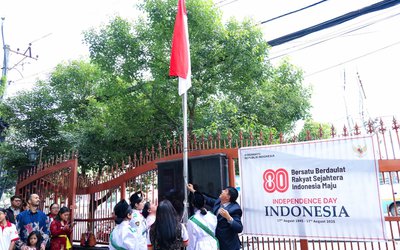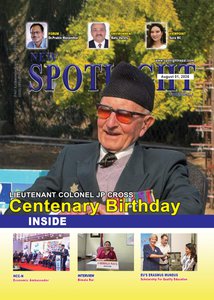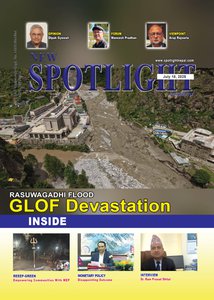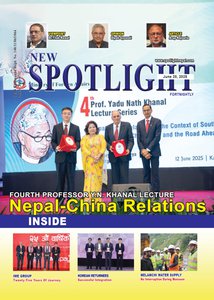The English saying, "The mind tends to go where it finds the most gratifying information," is considered an important guiding principle in media, communication, public relations, customer management, and advertising. It indicates the need for and assurance of accessibility to authentic and true information, which is the foundation of quality communication. In this digital era, while storing information is not a big issue, selecting and utilizing pertinent information remains crucial. A quotation by Maira Kalman states, “A visit to a museum is a search for beauty, truth, and meaning in our lives. Go to museums as often as you can.” To understand the depth of museums as indicated by this statement, museums are the center of truth and beauty that help us make meaning in our lives. It means the information and knowledge that we receive from museums are reliable, constructive, and meaningful. Therefore, museums are considered true and valid communication centers in the world, and visitors are encouraged to visit museums repeatedly.
The International Council of Museums (ICOM) defines a museum as “a not-for-profit, permanent institution in the service of society that researches, collects, conserves, interprets, and exhibits tangible and intangible heritage. Open to the public, accessible, and inclusive, museums foster diversity and sustainability. They operate and communicate ethically, professionally, and with the participation of communities, offering varied experiences for education, enjoyment, reflection, and knowledge sharing.”
This definition emphasizes communication through terms like ‘communication,’ ‘interpretation,’ ‘exhibition,’ education, and ‘knowledge sharing,’ underscoring communication as core and inevitable components of museums.
According to UNESCO, there are more than one hundred thousand museums in the world, which is 60% higher compared to 2012. In recent times, China has made significant investments in museums and has seen rapid development in the sector, with more than 200 new museums added annually. While there were fewer than 2,000 museums in China in 1995, the number has now exceeded 7,000. Along with the growing number of museums, there has also been a notable increase in the number of visitors. This growth necessitates enhanced communication strategies to serve diverse audiences effectively. Many museums have developed their communication, media engagement, and promotional policies and strategies, leveraging media engagement and promotional activities to maximize their impact.
The Indian Journal of Museum (2013), published by the Museums Association of India, has outlined 25 types of communication tools in museums, including Exhibition, Activity corner/discovery room, Museum guide, Gallery talk, Film shows, Reserved collection/Visual storage, Archive, Audio/visual section, Library, Lecturers, Demonstrations, Workshops, Conference/seminars, Social awareness program, Museum outreach program, Training, Museum visit by students, School loan kits, Supplementary educational institution, Event, Publication, Special educational program for differently-abled visitors, Eco-tourism and eco-museum related activities, and Collaboration and Publicity.
These tools are instrumental in enriching the communication power of museums, which ultimately helps fulfill the need for marketing, promotion, public relations, visitors’ engagement, and image building of the museum as well.
Beyond being repositories of artifacts, museums themselves are a communication institution that requires an effective and appropriate communication strategy, techniques, and tools to optimize their functions. While not all museums use every form of communication, many rely on various media such as social media. This diversity highlights the broad and dynamic scope of museum communication.
Prospects of Museum Communication
The emergence of ‘New Museology’ in the 1970s changed the traditional concept of museums and shifted its focus from galleries and objects to visitors. This concept emphasized the need for an optimized communication role within museums, which was accepted globally, and initiatives were put in place accordingly. The changing principles and practices of museums resulted in both internal and external communications and proved that external communication requires strategic planning, budgeting, human resources, and appropriate channels to reach the public effectively.
In the decades of the 80s and 90s, American and British museum professionals realized the importance of marketing, integrating it into their organizational structures to enhance public relations, awareness, visitor engagement, and to become places of learning, communication, and enjoyment. Eilean Hooper-Greenhill, a famous museum expert, has characterized museums as a form of “Mass Communication Media,” utilizing exhibitions, publications, and multimedia to engage audiences.
This evidence encouraged more museum professionals to invest in museum communication as well. Over the past five decades, museum communication has progressed from information transmission models to social constructivist models that recognize the experiences and perspectives visitors bring with them. This shift emphasizes the partnerships between museums and their visitors in the “making of meaning” and aligns with broader developments in digital media, where multiple modalities interact to create meaning.
Effective communication is the lifeblood of strategic development, relying on information management, language, target audiences, accessibility, and channels. Aligned with this communication principle, museums need to ensure two-way communication, which ensures knowledge dissemination and feedback collection, fostering cooperation, promoting inclusivity, and creating visitor-friendly museums.
Since museums play an essential role in promoting social cohesion and preserving the collective memory of society, they serve as a mirror to society, introducing visitors to diverse perspectives, fostering creativity, encouraging respect for diversity, and nurturing a cultural asset. However, experiences have shown that to fully harness this potential, museums need to adopt strong and systematic external communication.
The Nepali Context
While the global history of modern public museums spans over 350 years, Nepal’s museum history is less than a century old. The establishment of the first museums in Nepal, known as Nepal museums, in February 1929 AD, marks the beginning of its museum. In this history of approximately nine decades, Nepal has not established significant development of museums to explore its scopes, especially to connect with visitors. Currently, it is estimated that around 1000 museums are registered nationwide, attracting around 3 million museum visitors annually, though it needs to be verified by conducting authentic research.
As our law has given authority to three tiers of government (federal, provincial, and local), all three levels of government have operated museums. Some of the museums which are operated in full fledges have proven that they are working as effective communication centers to the public by disseminating knowledge of history, art, and culture through exhibitions, publications, and other communication tools. However, systematic communication practices are often lacking. If museums handle external communication in a systematic and planned way, there is no doubt they could connect more people and disseminate more benefits of museums to the public.
The Constitution of Nepal, under article 32 of the Fundamental Rights, mentions that every person and community has the right to participate in the cultural life of their communities and that every Nepali community residing in Nepal has the right to preserve and promote its language, script, culture, cultural civilization, and heritage. Likewise, the right to communication and the right to information are also fundamental rights of Nepali citizens, and all public institutions are legally bound to uphold citizens’ right to information. As museums are public institutions, they are similarly obligated to ensure access to information, making external communication a mandatory function. Thus, constitutionally culture, heritage, information, and communication are fundamental rights of every Nepali citizen. Therefore, communication in museums plays a crucial role in upholding both rights of citizens, namely the right to information and rights of culture and language.
The National Cultural Policy 2067 underscores the importance of communication in promoting culture, heritage, and museums. This connection underscores the fundamental significance and interdependence of information, communication, and heritage.
Nepali museums face financial challenges and struggle to manage the necessary resources for their operations. However, by recognizing the value of communication from both theoretical and practical perspectives, they can enhance their communication efforts even with limited resources. In the digital age, media convergence enables museums to engage with audiences online through websites and social media platforms, placing them in the same communication space as other media forms. Museums can function as media organizations by creating digital content, publications, interactive media, and more without requiring substantial financial resources. Platforms like blogs and podcasts facilitate real-time communication and cultural interpretation, expanding museums' reach and breaking traditional boundaries.
Using social media as branding tools can extend the museum experience beyond physical spaces and websites, providing visitors with a more immersive interaction. Social media also offers global visibility and access, enabling museums to reach new audiences and foster long-term engagement. It accelerates information dissemination, supports audience participation, and enhances the museum's brand through ongoing conversations and interactions. Strengthening communication roles is essential for promoting education, outreach, visitor engagement, marketing, public relations, and branding, all of which are vital for museum sustainability.
Ghimire, a social science researcher and development journalist associated with the International Council of Museums, emphasizes these points.
prakashdocument@gmail.com

